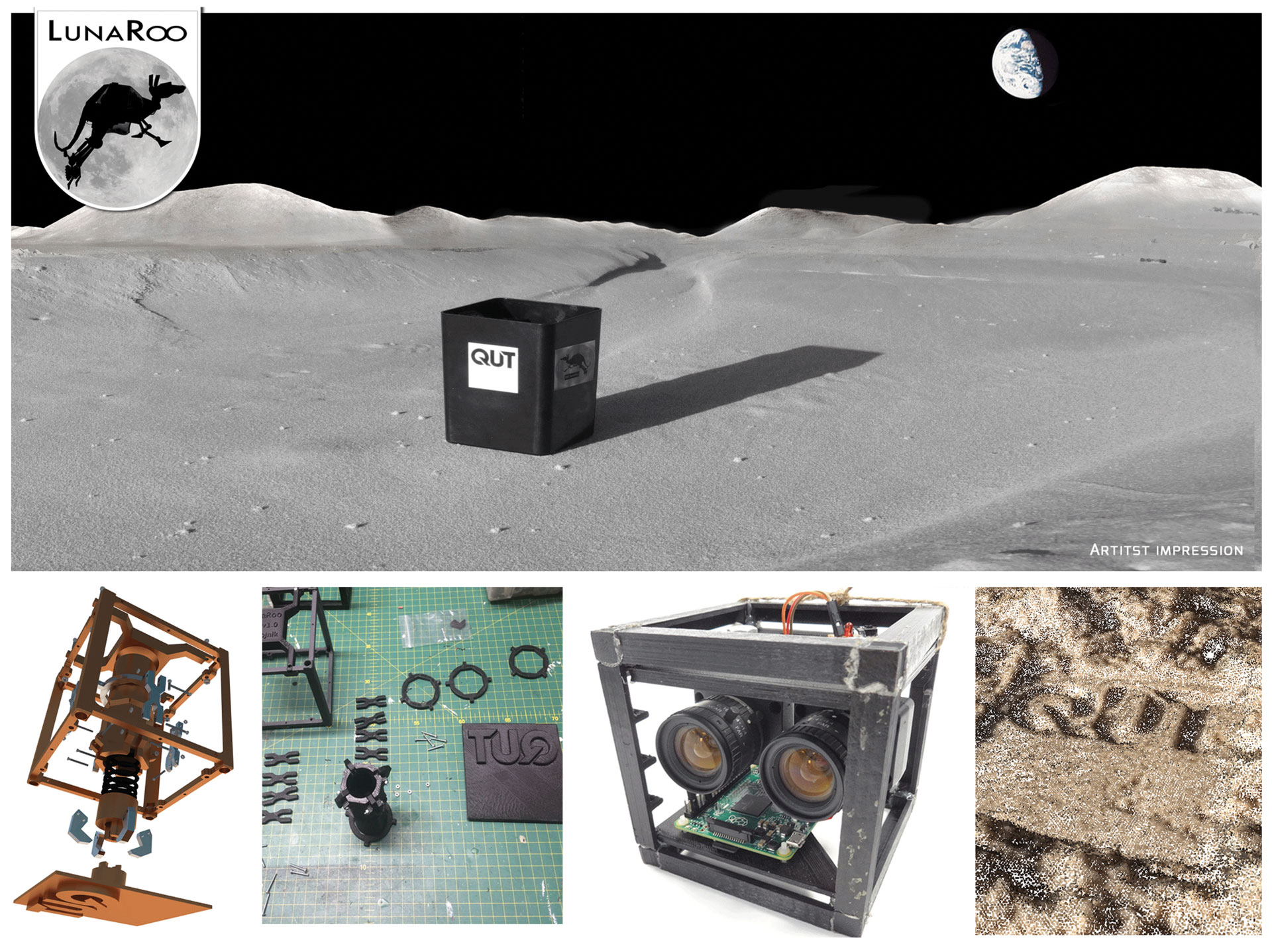
CASE STUDY: LunaRoo
Case Studies
Boeing Australia – Where humans and automation work together
Since the 2008 establishment of Boeing’s advanced research and development unit …
IR4 – Mass communication via robotic automation
IR4 is an early revenue technology company that is setting global benchmarks in …
Kalmar – AutoStrad Terminal Solution
Within the next 10-15 years many of the major stevedores will automate and the …
Wide area surveillance of the oceans requires a diversity of solutions …
Rio Tinto’s fleet of autonomous haul trucks have moved more than 1 billion tonnes of …
Share this story
The Australian Centre for Robotic Vision’s LunaRoo project developed a small hopping robot concept for future lunar use. LunaRoo uses jumping as a mechanism by which to overcome obstacles and gain height for imaging the local area. Based on the CubeSat concept, it is compact enough to fit in a 100 millimetre cube, weighs less than 1.3 kilograms and aims to jump to heights of 20 metres on the Moon.
In low gravity environments, LunaRoo can acquire images from a unique perspective (think drone for bodies without atmosphere) for traversability analysis, obstacle detection, and beyond-horizon planning to act as a scout for rovers or humans. It can also use this height to briefly bridge line-of-sight communication gaps or to roam further afield as a rover itself as a long-range explorer. LunaRoo’s primary strengths are its simplicity, small size and weight, and its great terrain traversal properties. It’s a very flexible unit and has been designed with payload space to allow it to carry out a broad range of scientific missions. It is to be solar powered to keep mass down, and to allow for long distance activities. Interaction with the regolith is also an important aspect for any jumping robot and this is accounted for with the design of the mechanism and the inclusion of foot options.
Collaborations with NASA’s Jet Propulsion Laboratory (USA), the European Space Agency’s Advanced Concepts Team and DLR (Germany) are in the exploratory stages.

Trending Article
An Australian university (ANU) has been the first to trial intelligent drones for automated inspection of solar power plants.
The project is an industry-researcher collaboration funded by the Australian government’s Australian Renewable Energy Agency (ARENA) developing a cost-effective robotic inspection system…

ANCA – Australia’s largest user of industrial robots
ANCA is an Australian company, founded in Melbourne in 1974, now with offices...

BIA5 Innovation Robotics and customers
BIA5 Pty Ltd is a start-up company that specialises in designing, manufacturing...

Harvey - the capsicum-picking robot
The horticulture industry in Australia has a gross value of more than $AU8...

Pegasus Alpha – Flying car
In the back streets of Brisbane, two brothers with a passion for the automotive industry had a feeling that the future is vertical.
